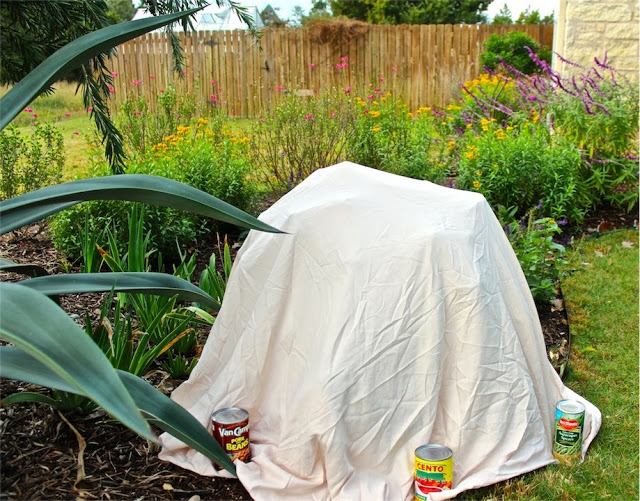 It is that time of year, when we play chicken with Mother Nature. Will it really get that cold? Am I in a little pocket that’s warmer/colder/somehow different than the forecast? Whenever winter arrives, there are many things you can do protect plants from frosts or freezes.
It is that time of year, when we play chicken with Mother Nature. Will it really get that cold? Am I in a little pocket that’s warmer/colder/somehow different than the forecast? Whenever winter arrives, there are many things you can do protect plants from frosts or freezes.
First, water moderately before the freeze. Water loses its heat more slowly than air throughout the night. Combined with covering plants or even a heat source, watering can help make a real difference by a few critical degrees.
Sheets, blankets and heavyweight row cover can all help protect plants. But it’s not the cover that keeps the plant warm, it’s the radiant heat coming up from the ground that is held in by the cover. Drape the cover all the way down to the ground and secure it like a tent with rocks, bricks or my favorite – canned vegetables (lighter than rocks, easier to find in a pinch, and they don’t mess up your sheets and blankets).
Do not, however, drape something over the top of the plant and tie it around the trunk like a giant lollipop. This is pointless, because you are actually keeping the heat away from the plant. If you have plants that can’t withstand the weight of a blanket or sheet, you can use tomato cages, boxes or PVC hoops or frames – really, anything to hold up the cover.
For particularly tender plants or a really cold night, you can also add a droplight or Christmas lights under the cover to create additional heat. Be careful not to let the bulb touch either plant or cover.
If temperatures rise above freezing – remove covers the next day to allow the plants to absorb the next day’s heat and recover as necessary.
So, plan now – collect your sheets and blankets, find some tomato cages, lights and canned goods and you’ll be ready to go when a surprise weather forecast sets you scurrying at 5 p.m.
